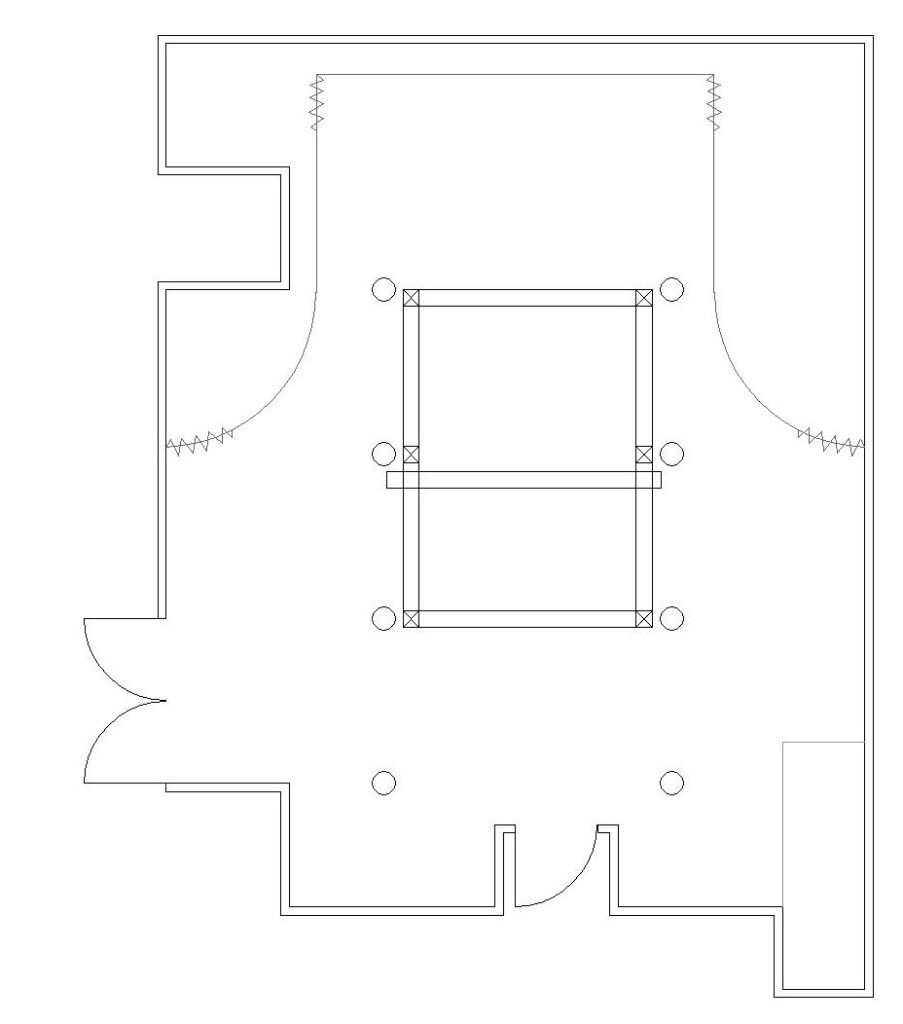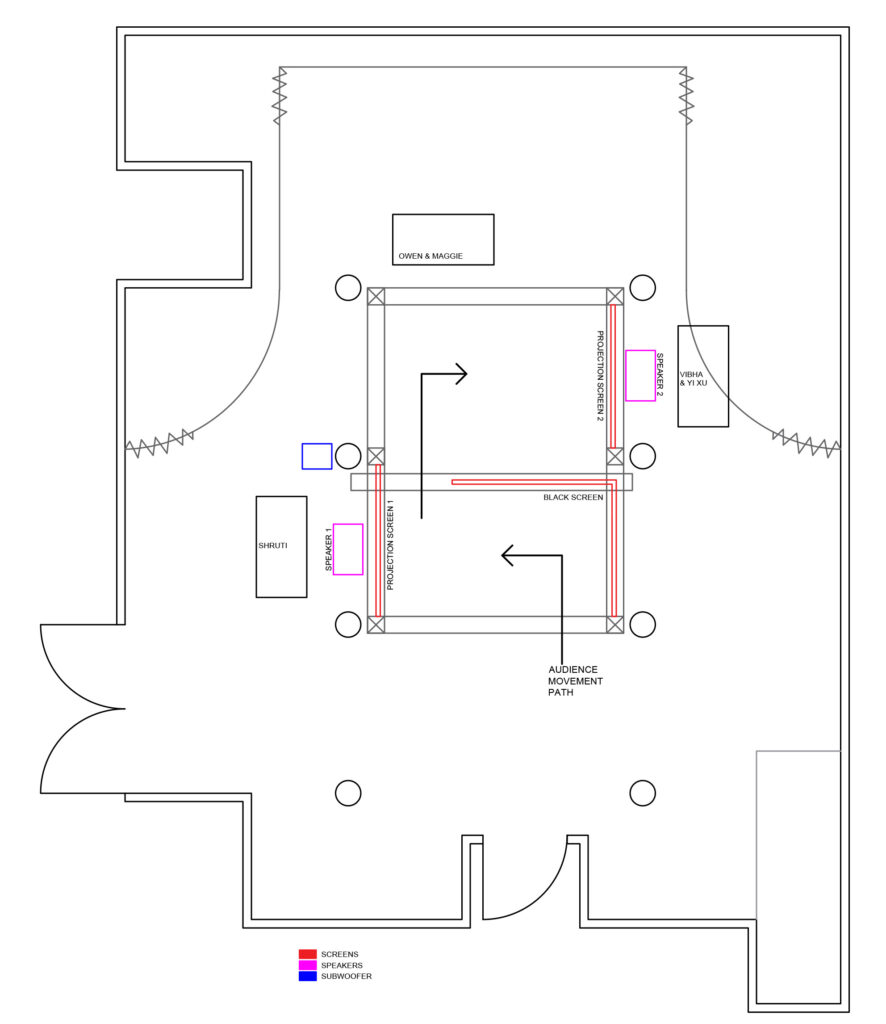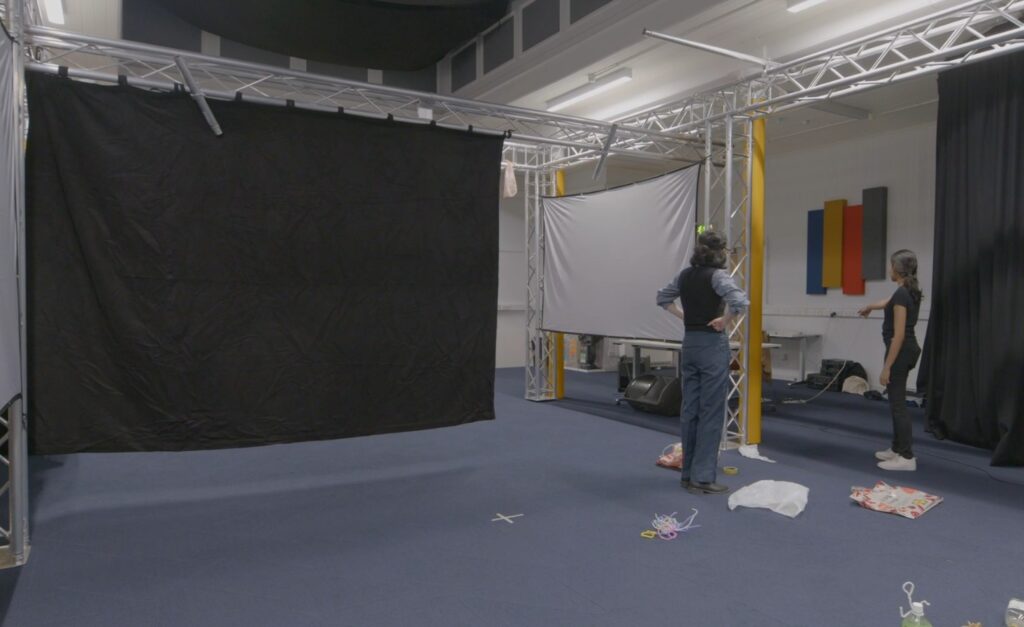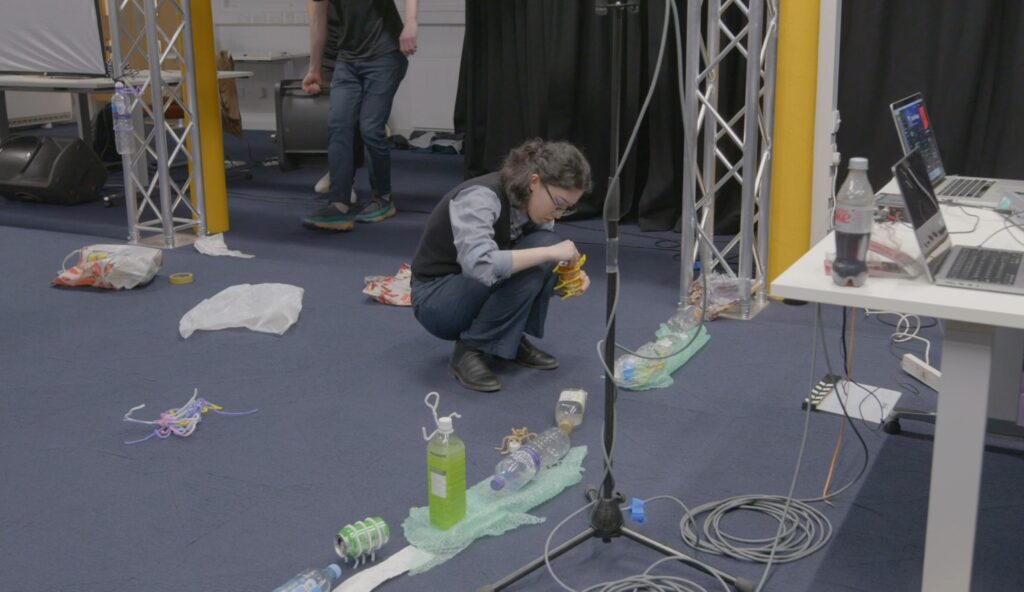Initially, we had thought of using West Court at ECA to showcase our performance, but we soon changed it to the Atrium in Alison House. The main reason is the already existing truss support that can be used to hang screens and partitions.
Below shows the plan of the atrium, please note it is NOT to scale. 
We decided to use the central space and with the help of the truss tie the screens. We weren’t able to establish a clear walk around within the room as planned before, but the audience does move from screen 1 to 2 as they move from my (Shruti) part to Vibha and Yi Xu’s part.
Below shows the stage we designed and the various places we positioned ourselves during the performance.
As seen, the audience enters the atrium and would first notice a black screen in front followed by the screen to the left. This is where part 1 is performed. The audience then moves through the gap and faces screen 2 to the right where the second half is performed. We were able to create an S-shaped movement pattern but a circle or a loop would’ve been more interesting as it would relate to our narrative and the audience would have an entrance/exit.
The digital designers sat behind their respective screens and the sound designers were in the corner of the S-shape. This way they could see both the screens and the audience.
Regarding the speaker setup, we decided to place 1 Mackie SRM450 on the ground tilted up 45 degrees behind each of the 2 screens. This seemed like an obvious choice, since the audience would be staring at each of the screens during the performance. This placement allowed us to have sound emitting only out of the speaker behind screen #1 during the first half of the performance, and then, when it was time for the audience to move to the second viewing area, we panned all of the sound to the speaker behind screen #2. This ushered in the audience effectively and was a creative use of a simple stereo setup.
We also placed a Genelec 7060 subwoofer at about the middle-left of the performance space. Since the low frequencies emitted by subwoofers are omnidirectional, we knew it didn’t matter precisely where the subwoofer was located or which direction it faced – we just put it roughly in the center of the room in order to emit an added ‘thump’, and it worked brilliantly!
Mengru and Vibha did some set designing by creating a boundary with plastic waste and even added some small lights which enhanced the stage. 





